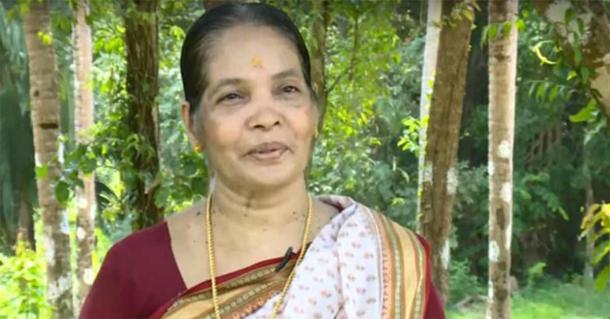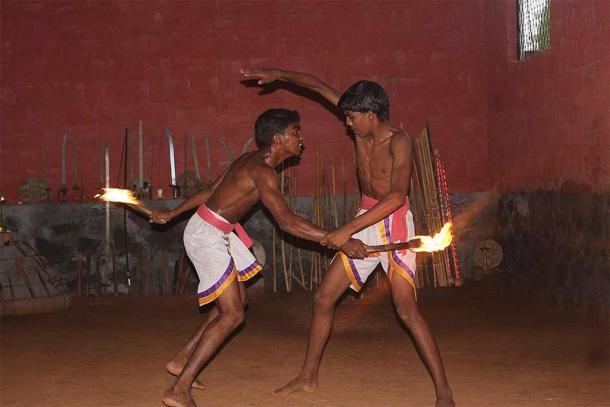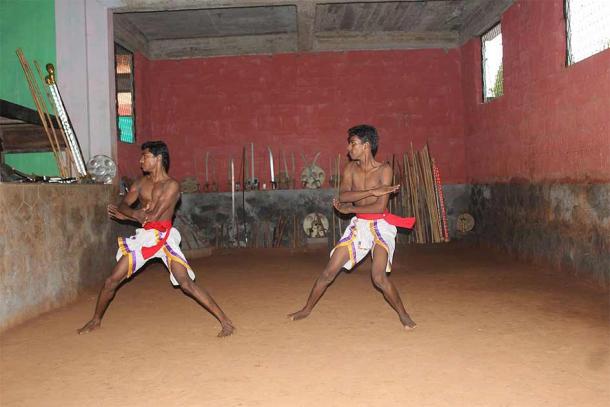Kalaripayattu, also known as kalari, believed to be 3,000 years old, is the oldest surviving Indian martial art. It originated in the southern state of Kerala, India. Intertwined with Hindu religious beliefs, this ancient Indian martial art carries with it the wonders of spiritual healing, and religious salvation. Al Jazeera reports how a great-grandmother in Kerala, at the ripe age of 78, is keeping the tradition alive. And in the process, she has become a driving self-defense force for young women and girls all over India.
Kalari: Indian Martial Art Form For Female Self-defense
Meenakshi Amma ( amma is a term of endearment used across various cultures and regions that connotes ‘mother’) is the matriarch of the Kadathanad Kalari Sangham Indian martial art school, founded by her late husband in Kerala in 1949. She won a national award in 2017 for her contributions to society through kalari.
“I started Kalari when I was seven. I am still practising, learning and teaching. When you open the newspapers, you only see news of violence against women . When women learn this martial art, they feel physically and mentally strong and it makes them confident to work and travel alone.”

Meenakshi Amma, co-founder of the Kadathanad Kalari Sangham Indian martial art school. ( Indus Scrolls )
What amma is saying is borne out a response to a society that treats its women very poorly, particularly since the beginning of the COVID-19 pandemic , which has left millions of Indian women vulnerable to increasing levels of domestic violence, assault, and sexual abuse . In a country where the justice system is faulty, and the police are functioning virtually as an extension of the state, the statistics are alarming. A recent WHO report, stated that 38% of all murders committed against women in India (the ones that are reported in the first place) are by their male partners or other family members .
This singular statistic was before the COVID-19 pandemic. And it suggests that pre-existing gender cultural biases and social norms make women particularly vulnerable to domestic abuse in India. Historically, the Indian government has had a difficult time solving this issue.
Human development indicators for India show disturbing sex ratios, and rampant female feticide, particularly in the northern states. More domestic violence complaints were filed in the span of 6 months during the first wave of the pandemic, than had been cumulatively filed by women over the past 10 years (an increase of a 131%), as per a report by the leading Indian daily, The Hindu .

Kalaripayattu demonstration using flaming torches. (India1277 / CC BY-SA 4.0 )
Kalari: A History of Dance, Healing, and Defiance
The word kalaripayattu is a combination of two Malayalam words – kalari (training or battle ground) and payattu (training of martial arts). Unlike other forms of martial arts, particularly Eastern Asian ones like kung-fu, or taekwondo, kalari teaches weapons-based techniques first, and then bare-handed techniques later. Kalari incorporates elements of dance and yoga, and involves weapons such as swords, shields and staffs.
The British, in the aftermath of the Kottayathu War, banned the martial art form in 1804, after a rebellion against British rule led by the Keralite king of the time, Pazhassi Raja. The ban was in official effect, but the very structure of kalari allowed it to survive.
Based on the guru-shishya (teacher-disciple) relationship, kalari remained an open secret and the art form flourished in its underground form. It went through a major revival in the 20 th century, especially after India gained independence from Britain. “There are two divisions in kalaripayattu – one is that kalaripayattu is peace and the other is kalaripayattu in war,” said the current “gurukkal” (master or teacher), Amma’s son Sanjeev Kumar.

Kalaripayattu training stances. (India1277 / CC BY-SA 4.0 )
The stakeholders of this now popular sport, which is practiced and performed all over India, realize the vital importance of saving its core, and thereby, it’s very roots. Says Meenakshi Amma’s granddaughter, Alaka S Kumar, a civil engineer by profession, “It’s a form of poetry. I am going to teach Kalari, with my brother. We have to take over. Otherwise, it is gone.”
Reports Sportstar, quoting Amma’s son Sanjeev, who poetically describes kalari, not as a form of randomized violence, but as a discipline that shapes the very essence of life. He eloquently talks about kalari purifying the heart, mind, and soul, its regenerating physical and mental energy, and how it can improve everyday concentration, patience, and speed. In many ways it shares peaceful attributes with the ancient Indian tradition of yoga (which is, of course, not a martial art form).
Amma’s efforts have paid off: in January of 2021, the government of Kerala announced the opening of The Kalarayipattu Academy in Kerala’s capital, Thiruvannanthapuram, covering an area of 3,500 square feet (325 square meters)! The gurukkals teaching the discipline will be under the tutelage of Meenakshi Amma, with a designed and structured syllabus, and will start with teaching 100 students, morning and evening.
Top image: Two Kalaripayattu swordsmen in mock sword against sword combat in Kerala. This Indian martial art is still very much alive today! Source: Phil Bus / CC BY-SA 2.0
By Sahir Pandey
 RSS Feed
RSS Feed













 October 5th, 2021
October 5th, 2021  Awake Goy
Awake Goy  Posted in
Posted in  Tags:
Tags: 
















